16 m away
Mount Dixon South East Ridge
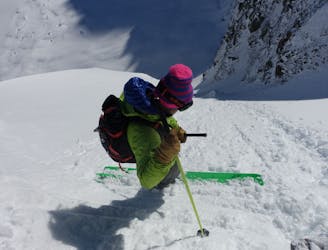
A classic and popular mountaineering peak, this is the easiest of the big peaks to ski from the Plateau Hut.
Severe Ski Touring
- Distance
- 5.1 km
- Ascent
- 832 m
- Descent
- 832 m

A collossal line and a truly world class ski face.
Ski Touring Extreme

Aoraki/Mt. Cook is the highest peak of the Southern Alps of New Zealand. Heavily glaciated on all sides, it is a mountain of genuinely Himalayan proportions. Steep and complex rock walls and glaciers guard the peak from all sides and there is no ‘easy’ way up to the summit. However, Aoraki/Mt. Cook is a coveted by mountaineers from around the world and receives numerous ascents each season, many of them guided. The mountain is far less popular for skiing since any descent is very steep and serious. Aoraki/Mt. Cook didn’t see a ski descent from the summit until Geoff Wayatt successfully skied it in 1982. He took a line roughly following the normal climbing route and not directly down the East Face. Subsequent notable descents of Aoraki/Mt. Cook were also made down this side such as Kiwi legend Bruce Grant’s first descent of Green’s Gulley.

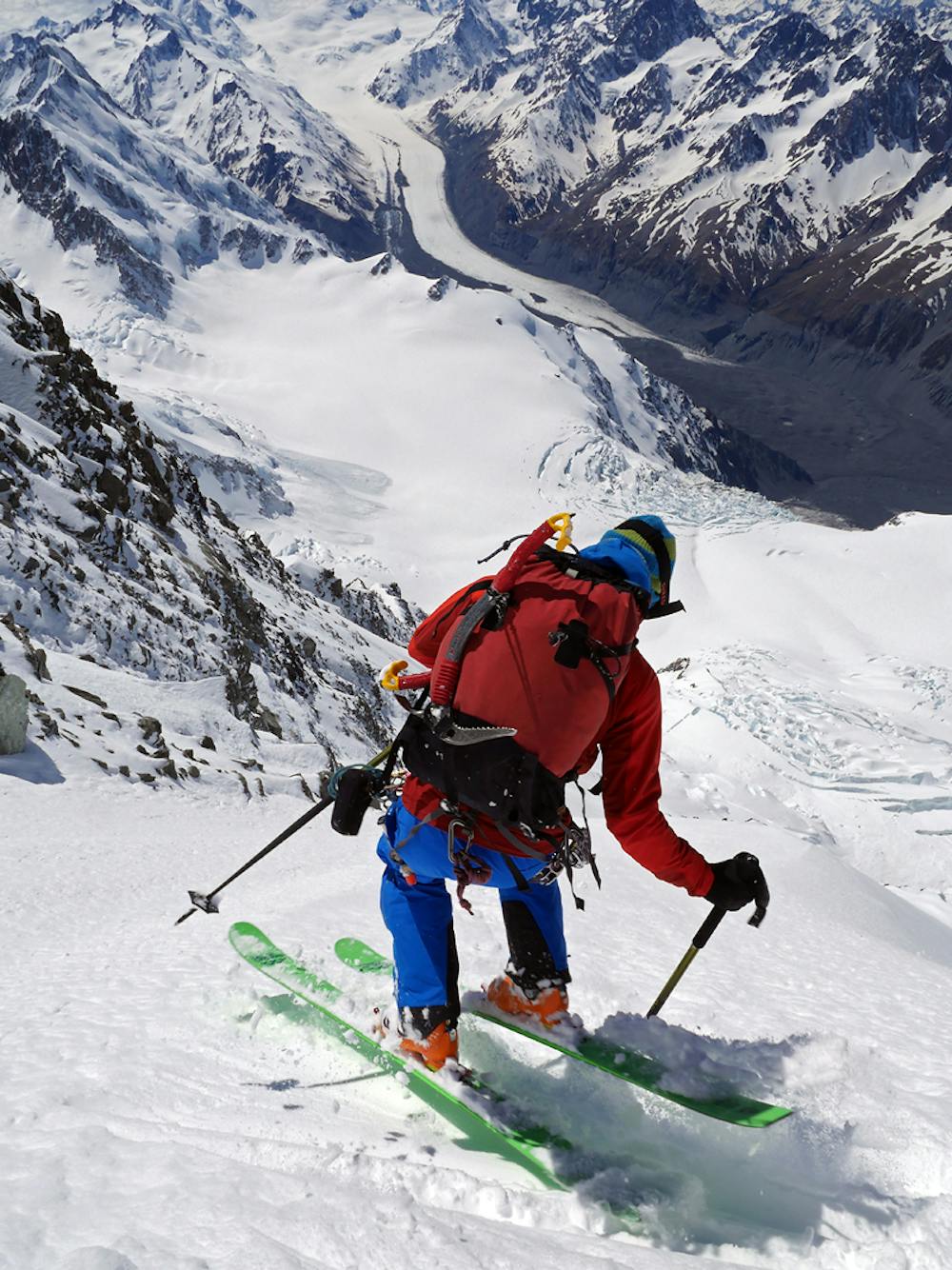
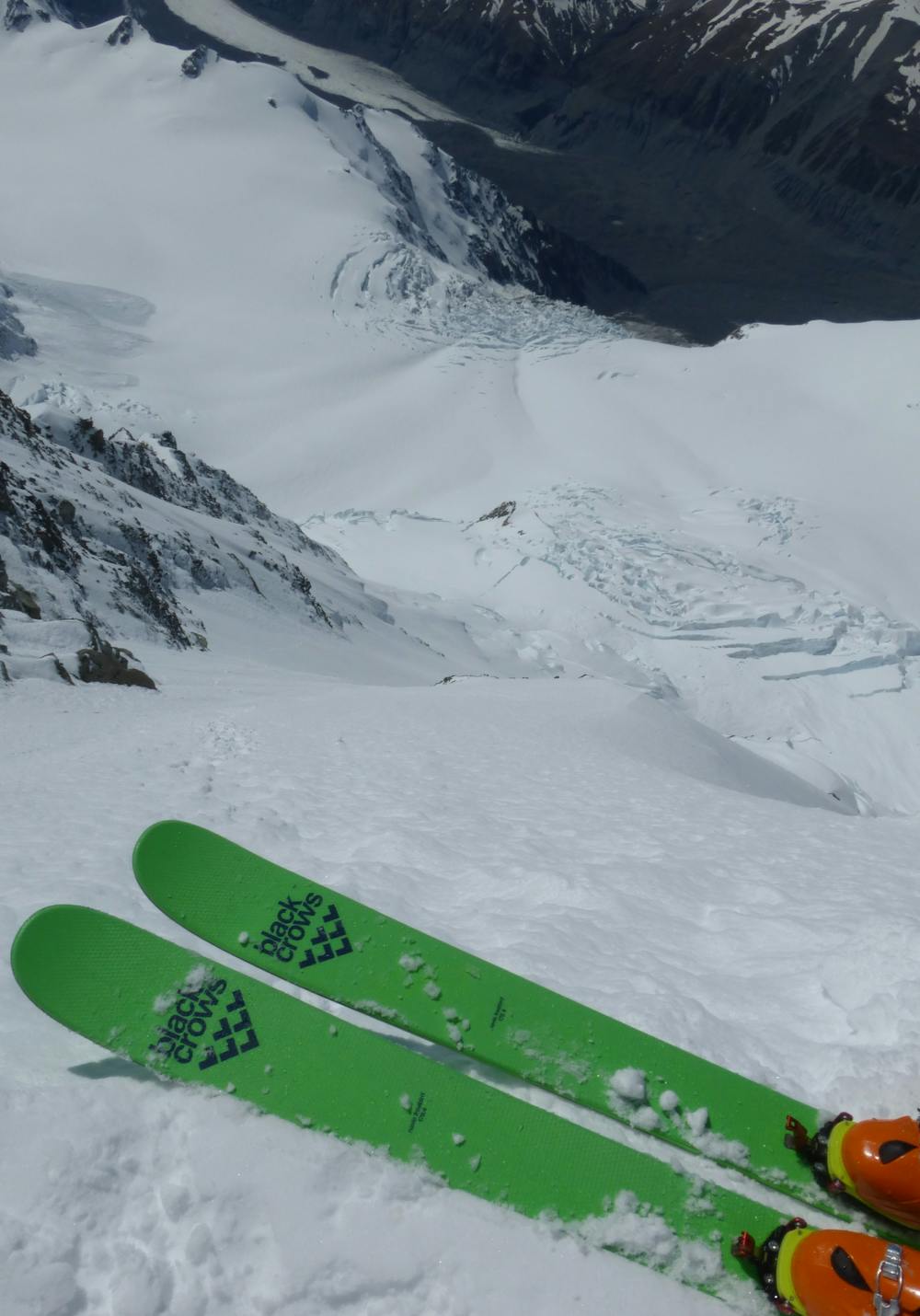
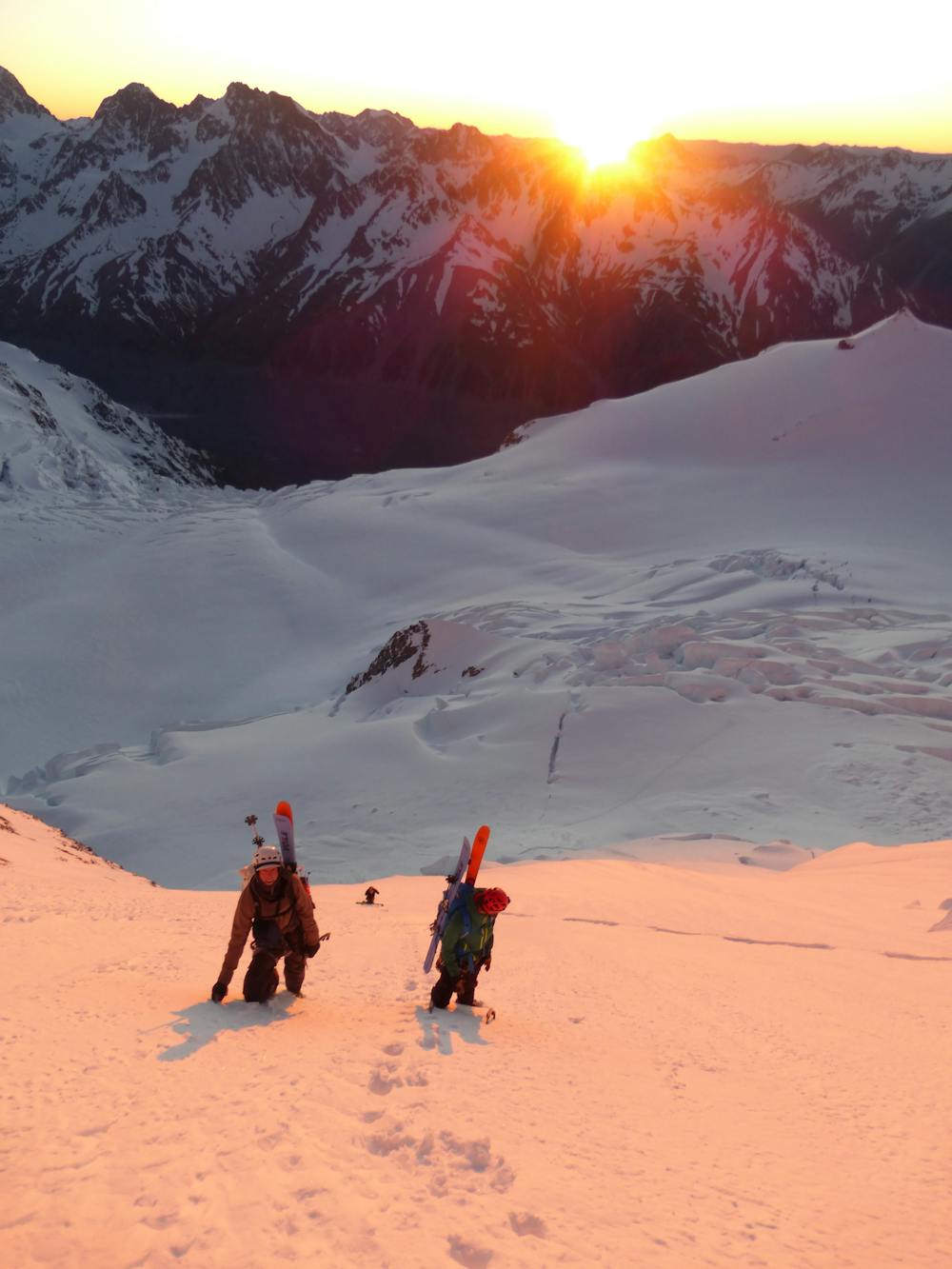
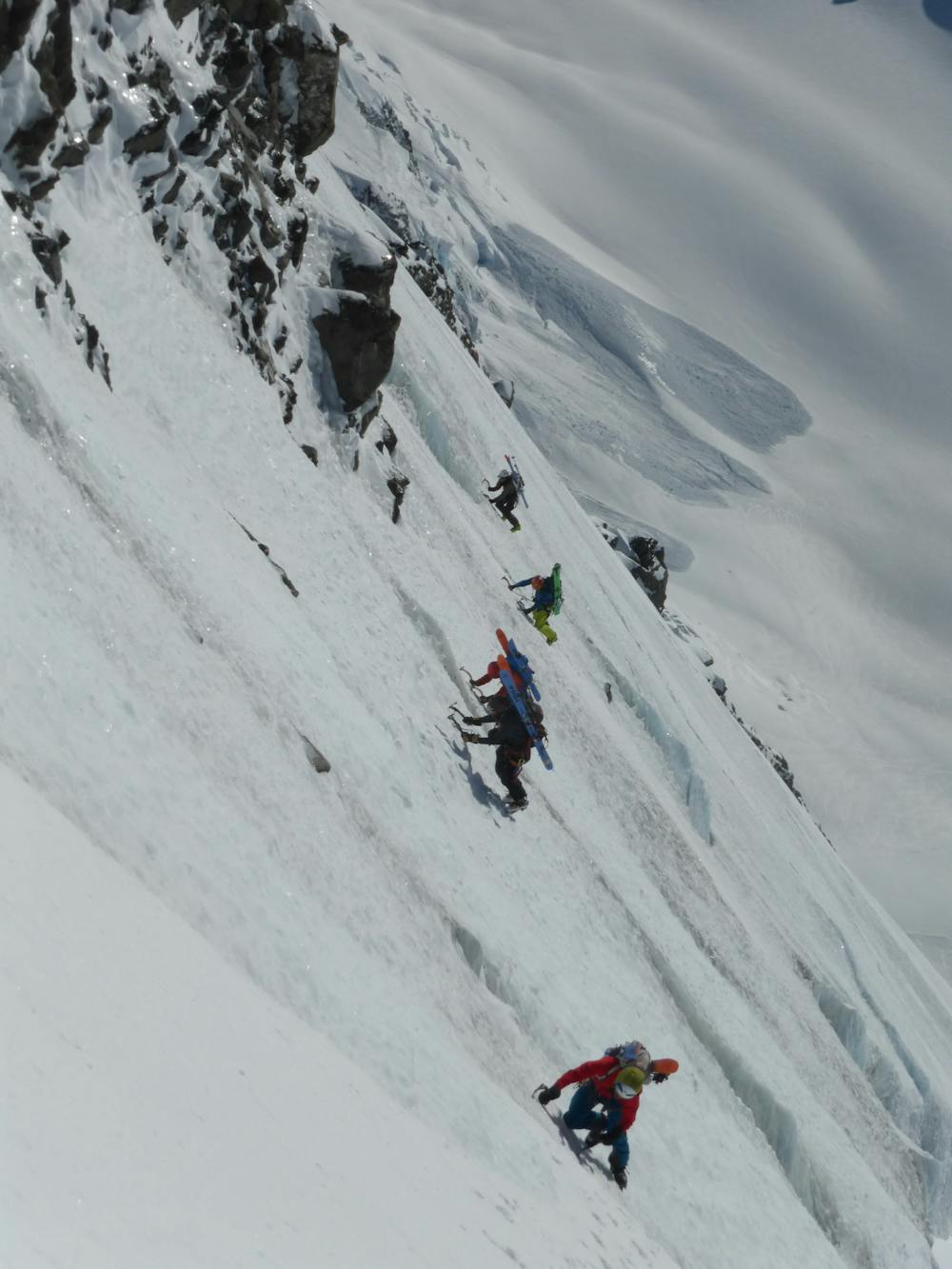
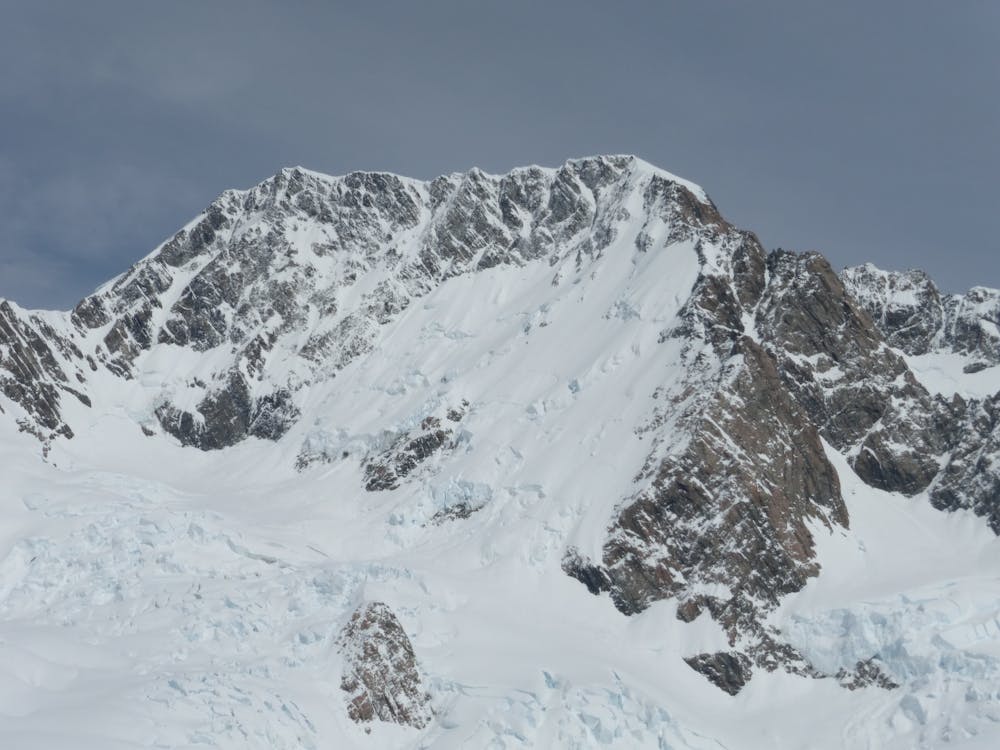
Despite this, for modern riders the East Face presents by far the most appealing and logical way down the mountain. A clean face with a sustained angle of between 40-50 degrees for 1,200 meters vertical making the line a truly world class ski face with few equals. In 1991 there was a colossal landslide whereby the entire upper portion of the East Face collapsed, thus completely changing it and removing most of the menacing seracs. Freddy Verango, an Italian guide, made the first known descent of the ‘new’ East Face in 2011. Until the last few years the line has seen very few documented descents. Steep skiing legend Andreas Fransson along with Magnus Kastengren claimed to have skied the first complete descent from the summit in 2013 without taking skis off and downclimbing the icy top section. Since 2013 the East Face has been skied multiple times and is now becoming a true ‘classic’ rather than simply the domain of the world’s top skiers.
Access to the mountain is very straightforward provided you take a flight into the spectacularly situated Plateau Hut (most teams opt for this rather than walking in). An hour’s skin from the Plateau Hut brings you to the foot of the face. From the bergschrund take a direct line to the top for 1,200 meters and ski back down the same way. In October through to mid-November, the face can often hold good snow. The summit slopes and top 50 meters of the East Face are often unskiable due to their exposure to the commonly very strong westerly winds.
Extreme
Extreme skiing terrain above 45 degrees. These routes are reserved for experienced experts.
16 m away

A classic and popular mountaineering peak, this is the easiest of the big peaks to ski from the Plateau Hut.
Severe Ski Touring
130 m away
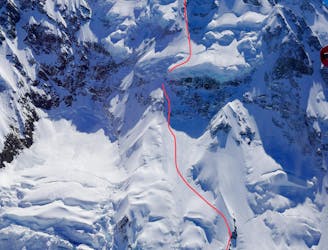
The largest and most mythical alpine face in New Zealand, it was first descended on skis in October 2017.
Extreme Ski Touring
9.1 km away

Superb spring skiing on a beautiful and open face.
Difficult Ski Touring
9.3 km away

A great and semi easy access ski tour on the West Coast
Moderate Ski Touring
9.3 km away
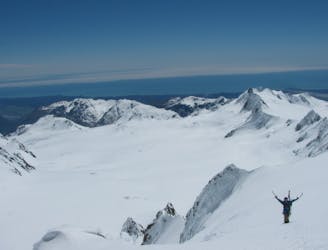
A stunning and semi-technical ski tour on the West Coast
Difficult Ski Touring
9.8 km away
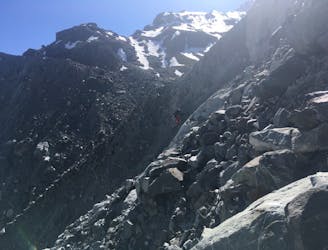
A very technical and spectacular line on a major peak
Extreme Ski Touring
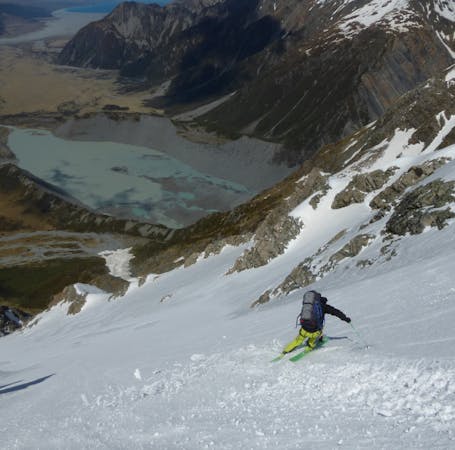
5 routes · Ski Touring

17 routes · Ski Touring